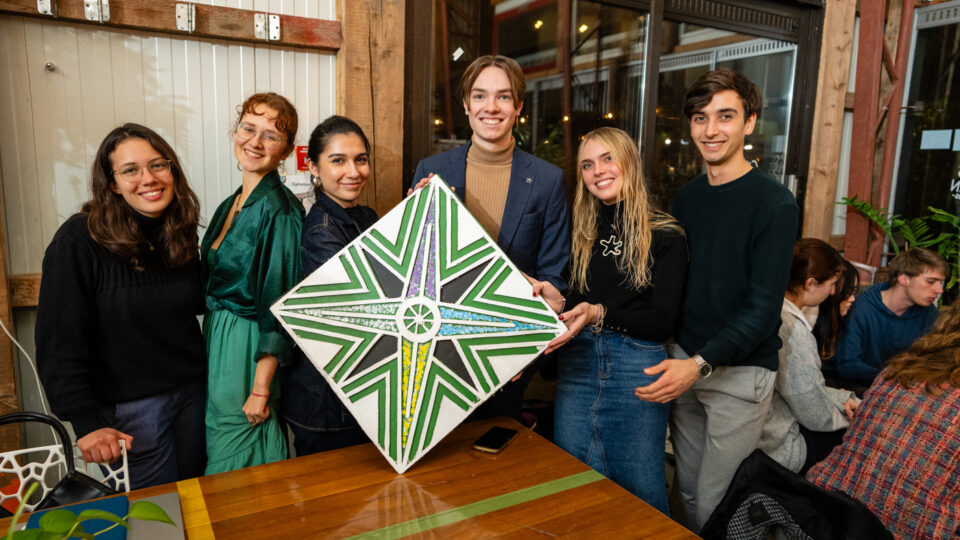In the Netherlands, rain occurs about 130 days each year, with an average of 100 minutes of rainfall per day. Most flooding incidents are concentrated in the country’s western regions, which are the lowest elevated areas and are situated below sea level. Woerden, in particular, faces significant drainage challenges due to its predominantly peat soil composition, which tends to accumulate and decompose organic materials, exacerbating drainage issues. We as team Paridae were challenged by the Province of Utrecht to address this issue providing a sustainable solution.
The solution proposed for Woerden involves a communal garden, drawing inspiration from successful projects across different Dutch municipalities. The garden’s design resembles a compass, with wetlands on each side to manage excess rainwater, while greenery aids in water absorption through osmosis. The chosen colorful plants represent various regions of the Netherlands, adding to the garden’s ecological diversity.
In addition to its functional aspects, the garden incorporates pathways made of rocks to encourage community engagement, along with informative posters promoting sustainable practices. Volunteers are essential to the project, as evidenced by the high demand for such initiatives in Woerden and elsewhere. The estimated cost of implementing the prototype is approximately 46,000 euros. The proposed location for the garden is within Woerden’s Honden Uitrenveld, identified as a green area with existing drainage challenges, according to flood maps.
Experimental testing has validated the effectiveness of the communal garden model in water absorption, demonstrating its potential to alleviate drainage issues in Woerden. This initiative not only addresses local concerns but also promotes sustainability and community involvement in urban planning and environmental stewardship.


